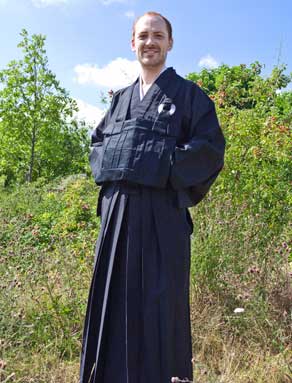I’ve been reading Kapleau’s classic introduction to Zen “Three Pillars.”
Kapleau, following the Harada-Yasutani tradition of koan introspection places, I think I can fairly say, huge emphasis on triggering a “kensho” experience, often described in rather dramatic terms, as an essential to spiritual development. Frankly, I found this – and some of the methods in ‘triggering’ kensho- disturbing and absolutely rife for abuse (ok, this book dates to the mid-1960s when issues of abuse were not as openly discussed as they -fortunately-are today). For example, dokusan secrecy (yes, there is a need for counseling confidentiality – but these are different things), special information and experiences that separate people into an elite vs. ordinary folk, use of the kyosaku, etc. As I continued reading, I warmed, somewhat to the book as Kapleau and and Bohdin Kjolhede seemed to admit that ‘kensho’ isn’t a ‘one size fits all’ and its not a magical solution of all of life’s problems – but, that said a profound experience of ‘non-duality’ what have you, can be a powerful and healing experience. I think I have had experiences like that in my life – not from a koan assigned to me (and, yes, I have studied koans in the Yasutani tradition) but rather from the koans life will inevitably assign if you live long enough.
What are your perspectives? On Kapleau’s book, and on spiritual experience – koan introspection in the Yasutani tradition vs. more ‘gradual’ approaches?
gassho,
sean
sat,lah
Kapleau, following the Harada-Yasutani tradition of koan introspection places, I think I can fairly say, huge emphasis on triggering a “kensho” experience, often described in rather dramatic terms, as an essential to spiritual development. Frankly, I found this – and some of the methods in ‘triggering’ kensho- disturbing and absolutely rife for abuse (ok, this book dates to the mid-1960s when issues of abuse were not as openly discussed as they -fortunately-are today). For example, dokusan secrecy (yes, there is a need for counseling confidentiality – but these are different things), special information and experiences that separate people into an elite vs. ordinary folk, use of the kyosaku, etc. As I continued reading, I warmed, somewhat to the book as Kapleau and and Bohdin Kjolhede seemed to admit that ‘kensho’ isn’t a ‘one size fits all’ and its not a magical solution of all of life’s problems – but, that said a profound experience of ‘non-duality’ what have you, can be a powerful and healing experience. I think I have had experiences like that in my life – not from a koan assigned to me (and, yes, I have studied koans in the Yasutani tradition) but rather from the koans life will inevitably assign if you live long enough.
What are your perspectives? On Kapleau’s book, and on spiritual experience – koan introspection in the Yasutani tradition vs. more ‘gradual’ approaches?
gassho,
sean
sat,lah








 Yet we have folks who have been around here for years and never even thought of tossing a nickle in the hat. That's not good either. There have been studies that show that people value more what they must pay for.
Yet we have folks who have been around here for years and never even thought of tossing a nickle in the hat. That's not good either. There have been studies that show that people value more what they must pay for.  ). Who says they have to be welcoming?
). Who says they have to be welcoming? 


Comment